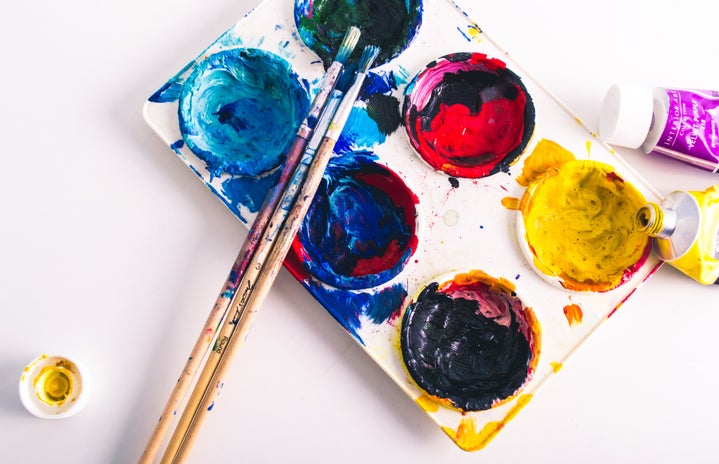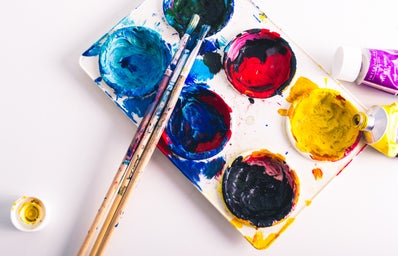Creating art has always been one of my favorite hobbies. Back in high school I would barely pay attention during class, instead doodling in the margins of my notebooks and then drawing even more when I got home and had more free time to myself.
(Pro-tip: don’t draw for eight-plus hours a day for endless days in a row, even if it’s fun. I ended up giving myself a repeated stress injury in my right wrist because of it and ended up in a wrist brace for a while. It wasn’t the best experience that one can have.)
With how much I enjoyed it as a hobby, it felt almost obvious that I attempt to transition it from a fun activity into something more! I’ve successfully done multiple commissioned digital artworks for people and the reviews I’ve gotten have been pretty solid overall. This article is going to detail a few things to make your own transition into creating your side hustle a bit easier.
The first thing you need to understand is that when you shift your hobby to side hustle, it becomes a product. I’m very attached to my artwork and I know that I, personally, don’t handle harsh critique well. Looking at my work as a product instead of a personal piece of me has made the transition far easier, as it feels less like I, as a person, am being insulted when someone doesn’t want to buy my work.
If you are selling a product (in this case, your artwork) you need to understand that it becomes open to critique and customer review. Understanding this can reduce so much heartbreak in the long run, so please be aware of this before you start to sell your stuff.
Drawing is a skill that takes a long, long time to develop into something that people would be willing to spend money on. The first thing you need to do is take an objective look at your work and weigh whether or not you would be down to drop money on some of your pieces. There’s no shame in admitting you’re not there yet. I had a few false starts where I had just finished creating my prices or had just finished fantasizing about drawing people’s portraits or original characters before staring long and hard at my artwork and realizing that it wasn’t at a point where I would be pleased with selling it as a product yet.
The only thing you can do to develop further is to determine which spots need work (i.e. working on lighting, anatomy, coloring in general or even backgrounds) and find resources that will help you improve. In my experience, once you’re past the basic “drawing 101” phase, it’s a bit difficult to find intermediate or advanced resources. Youtube channels on art tend to pander to the younger or the beginner crowd because more people are at a beginner stage than an intermediate or advanced stage.
Turning to other sites like Skillshare can help fill the gaps, and there are a few Youtube channels in particular that focus on aiding a more advanced audience. I’ll link my favorite one below!
Once you’re at the point where you believe that yes, you’re able to offer a product that people would theoretically be willing to buy, you have to come up with prices. Art is a luxury good. It’s not a need, it is a want, and it is an expensive want. If you are creating bespoke artwork for someone, then this someone needs to pay you a reasonable price.
I make sure my commissions are expensive. I don’t want to give myself carpal tunnel or tendonitis for $25 for a full-body, full-color piece of artwork that takes me eight hours to finish.
The first step is tracking how long it takes you to create your works. If you work on certain digital art programs, like Procreate, there are in-app systems that can tell you how long your work takes. For reference, I have a work in progress that’s a 3/4 body artwork of someone’s original character. I have finished the line art and started to color the artwork, and it’s already clocking in at around four hours.
Start by figuring out your average for your work and then figure out the minimum wage price for this. After you have that rough price, charge more. Bespoke artwork is a luxury good, it’s worth luxury prices. There’s a massive issue in the art selling community of people undervaluing their work, which results in people digging their heels in whenever they see a higher price.
Once you have your prices set, make a document detailing what you will not draw. I just use standard Google documents for this because it’s easy! Some people like testing boundaries and will request things that make you uncomfortable or simply something that you cannot draw. Making a document that details this is an easy way to get the worst of it to stop, and gives you something to point to whenever someone asks “why?” when you refuse to take their commission.
The next place is to find a venue to sell your artwork. Generally, I’ve received the best results and the most buyers from Reddit of all places! There are so many art-based subreddits where people buy and sell work, you should be able to find them with ease as the site is very search-friendly. There’s also an in-app messaging function, which makes selling your work and talking with customers far easier than it would otherwise be.
Interacting with customers is so important at this stage, it can make or break your side hustle. You should be bright, cheery and eager when talking to potential buyers! It’s a little embarrassing seeming so chipper, but you catch more flies with honey than with vinegar, so having a positive attitude can take you very far.
The final thing to think about is how you’re going to process payments. Venmo and Cashapp are U.S.-only and this can cause issues when selling online, as people overseas may not be able to purchase your work. PayPal and Stripe are other payment processors that people use, and these are international! I find that it’s more useful to have multiple methods of payment processing just to attract more people.
Keep in mind that these payment processors might give out your real name to people online who buy your work. PayPal is notorious for this. Just remember this in case that’s a dealbreaker for you.
After all of that is figured out, you should be set to start your side hustle! Sales might be slow at first, but once you build a reputation as a reliable seller, you should pick up more traction. It doesn’t seem like it from the outside, but a lot of online freelance artists have a reputation of taking months and months to fulfill commissions. So, naturally, if you deliver a quality product within a week or so, you’ll attract more customers.
That’s another thing to remember, you’re not able to say you have no inspiration or have art block if you’ve already taken people’s money. That’s something that’s definitely different from it being a hobby compared to a side hustle. Respecting your customer’s money is crucial to avoid garnering a poor reputation.
Hopefully, this article was detailed enough to offer a strong starting point for your new side hustle! Good luck, and hopefully these tips and pointers were able to clear up some of the more murky details.



